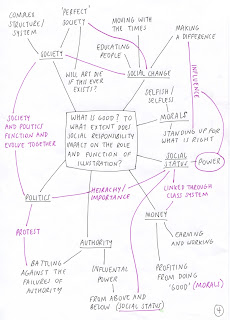This is a narrowed down list from the list I made a few weeks ago, combined with any more questions raised within my research since that point.
Can an illustrator afford to stick to strict morals with their work?
Does making money or making a difference define the success of your practice?
Is it possible to have a selfless creative practice?
Can your work still be doing good for the world if you are making a profit from it?
Is the concept of social responsibility a gimmick for selling products?
Is social morality a give and take process?
Is it okay to gain from what you are contributing to society?
Which class or section of society should be the main target for driving social change through art work?
Does a creative need a personal connection to a topic to drive social change around that subject?
Narrowed down questions…
Is the concept of social responsibility a gimmick for selling products?
To what extent is it morally acceptable to gain from what you contribute to society?
Why am I researching this? What do I want to prove/achieve?
I am researching this because I am interested in making work that can drive social change and a change in attitude on a small scale. I am not looking to change the world but a small contribution to making it a better place is an achievement by any means. I want to look at how this can be / has been exploited and whether using social responsibility as a ‘unique selling point’, so to speak, is morally right when you are making a profit from it.
Is my question researchable?
I think this question is researchable, I can find out how this concept connects to companies from past and present. I have already read a bit about the United Colors of Benetton and I feel like this might have the potential for more in depth research.
I think for this to stay relevant to my practice I need to look at illustrators’ practices that relate to this topic. I think this will provide me with a stronger chance of making actual contact and being able to ask them specific questions I want to find out about.
For the practical side, I am thinking that it will be the distribution of the imagery I make that will be most closely connected to my dissertation topic.
What could be a working title? Does it need a subtitle? Is it concise?
To what extent is the concept of social responsibility a gimmick/contrivance/device for selling products in consumer culture?




